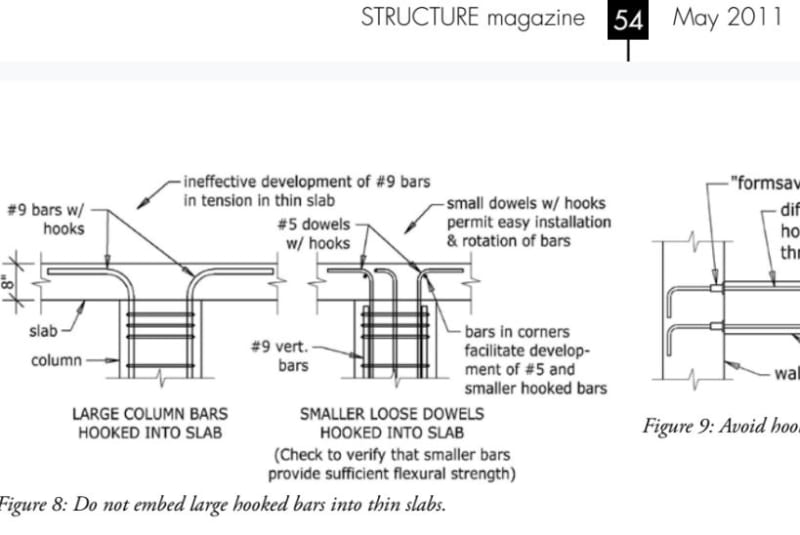ajk1
Structural
- Apr 22, 2011
- 1,791
Question about the horizontal length of the "L" shape bars between the column and the roof slab, that are there to transfer unbalanced moment between the column and slab: Should that horizontal length be a tension lap length of the L bar with the top bars in the roof slab, or should it be a tension development length? See attached.





